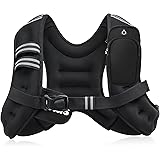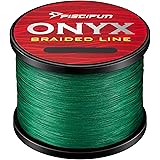The accompanying video provides a detailed tactical breakdown. It highlights a recurring issue with Jonathan Kuminga’s integration into the Golden State Warriors’ complex offensive system. Specifically, his decision-making often clashes with the intricate, read-and-react principles that define the Warriors’ approach. This analysis delves deeper into these specific challenges.
The Golden State Warriors’ offense is often lauded for its fluidity. It relies heavily on off-ball movement and sophisticated screening actions. Players are expected to make quick, intelligent reads. These reads capitalize on defensive rotations and create advantages. However, Kuminga’s actions sometimes disrupt this delicate balance. His play often diverges from these established protocols.
Understanding the Golden State Warriors’ Offensive Philosophy
The Warriors’ offensive system is built upon foundational “automatics.” These are specific actions triggered by player movement or defensive positioning. For instance, a player cutting from under the basket often necessitates a pin-down screen. Such actions are designed to generate open shots for perimeter players. This especially benefits someone like Steph Curry. The system thrives on collective understanding and execution.
Imagine if a driver ignored traffic signals on a busy highway. The result would be chaos and inefficiency. Similarly, when a player like Kuminga opts against an automatic, the offense stalls. The video illustrates instances where Kuminga failed to execute such reads. A motion weak set, designed to free Curry, was instead met with an ill-advised drive. This decision-making compromises the strategic intent of the play.
Kuminga’s Struggle with Off-Ball Movement and Reads
The Golden State Warriors prioritize off-ball activity. It is crucial for generating open looks. Curry, the team’s primary offensive engine, frequently operates without the ball. He utilizes various screens, such as cross screens and pin-downs. These actions are designed to bend defenses and create scoring opportunities. However, Kuminga’s situational awareness has been questioned.
Numerous instances are observable where Kuminga misses these fundamental reads. The low post split, a Warriors staple, often goes unrecognized. Curry would benefit from Kuminga setting a screen. Instead, Kuminga frequently chooses isolation plays. This tendency disrupts the flow of the Golden State Warriors’ offense. It forces other players into less optimal positions.
The Efficiency Impact of Shot Selection
An underlying issue contributing to Jonathan Kuminga’s struggles is his shot selection. His propensity for contested mid-range isolation shots is notable. This style of play is typically reserved for elite, highly efficient scorers. Players like Kevin Durant possess the unique skill set to consistently convert such attempts. Kuminga’s efficiency numbers in this area, however, tell a different story.
Data indicates Kuminga ranks in the 30th percentile for non-rim paint shots. This places him near the bottom of qualifying NBA players. Specifically, he was 100th out of 110 players who attempted at least 140 such shots. These inefficient attempts comprise a significant portion of his offense. They represented a substantial 29% of his total field goals attempted. Such futility significantly impacts the team’s offensive efficiency.
Consider the potential impact on overall team metrics. Each contested, low-percentage shot translates into a missed opportunity. This could have been a more efficient possession. When Steph Curry is on the court, these decisions are particularly costly. His presence often creates high-percentage shots for teammates. Ignoring these opportunities can be detrimental.
The Steph Curry Mandate and Team Chemistry
Steph Curry’s stature within the Golden State Warriors is undeniable. His presence demands specific offensive orchestration. Players are expected to facilitate his movement and impact. This often involves setting screens or making timely passes. The video highlights instances where Kuminga appeared to disregard Curry’s clear instructions. Curry was observed pointing to open teammates. He expected a pass, but a different shot was taken.
This dynamic extends beyond individual plays. It speaks to a broader understanding of team hierarchy. An established superstar’s directives typically carry significant weight. Failure to adhere to these cues can strain team chemistry. It can also lead to decreased trust from coaching staff. This situation inevitably creates a real headache for any coach. The team cannot afford wasted possessions.
The Disconnect with Warriors ‘Automatics’
The concept of ‘automatics’ within the Warriors’ offense is crucial. It simplifies decision-making under pressure. A common automatic involves setting a pin-down screen for a shooter cutting baseline. Jimmy Butler, a veteran acquisition, reportedly adapted quickly to these expectations. His seamless integration highlights the importance of such adherence. However, Kuminga has repeatedly demonstrated difficulty. He struggles with recognizing and executing these fundamental plays.
Imagine a symphony orchestra where one musician decides to improvise. The harmony would be broken. Similarly, when Kuminga fails to execute an automatic, the offensive rhythm falters. Instead of setting a screen, he may cut unnecessarily. This often results in a contested shot. These missed opportunities compound over time. They underscore a fundamental disconnect with the Warriors’ offensive identity.
The Playoff Performance Anomaly Without Steph Curry
Jonathan Kuminga’s performance against the Minnesota Timberwolves in the playoffs offered a glimpse of his potential. He displayed flashes of brilliance. His efficiency improved in certain areas. This notable surge, however, occurred in the absence of Steph Curry. Curry’s injury fundamentally restructured the Golden State Warriors’ offense. This shift allowed Kuminga a different operational framework.
Without Curry, Kuminga had more ball-handling responsibilities. The offense became less reliant on complex off-ball screens. It featured more isolation and transition opportunities. He excelled in getting to the rim and finishing strong. Ten of his 38 field goals were in transition. His overall efficiency improved. His isolation pull-up shot percentage saw a modest increase. It moved from 30.4% to 35.1%. This improvement, while slight, is noteworthy. However, this percentage still ranks near the bottom of the league for isolation scoring.
The simplified offensive environment suited Kuminga’s strengths. It allowed him to operate more freely. He did find opportunities to contribute as a cutter. This aspect should be encouraging for the coaching staff. However, the core challenge remains. Curry will invariably be on the floor for the vast majority of games. The primary directive will always be to get him open. This strategy also benefits all other players. Kuminga’s willingness and ability to adapt to this reality are paramount.
Player Development and Future Prospects for Jonathan Kuminga
Jonathan Kuminga, at 22 years old, has completed his fourth NBA season. This included his third playoff run. The question of his developmental trajectory has become pressing. He possesses immense athletic gifts. However, his skill mastery has not yet caught up to his ambitious shot selection. He frequently attempts to draw superstar fouls. Unfortunately, the officiating standard often does not favor him. This leaves him flailing on many missed shots.
Comparisons are often made to fellow 2021 draftees, Cade Cunningham and Scottie Barnes. While these players operate in different team contexts, their basketball IQ and decision-making are generally considered superior. Kuminga’s feel for the game, particularly within a sophisticated system like the Golden State Warriors’, appears to lag. This disparity raises concerns about his long-term fit.
Contract Implications and Potential Trade Scenarios
The Golden State Warriors face a critical decision regarding Kuminga’s contract. Hesitation to offer a long-term deal or player option is evident. The team cannot afford to waste Steph Curry’s remaining prime years. They need players who align with their system. Reports suggest the Sacramento Kings show interest. This is intriguing given Doug Christie’s potential offensive scheme. A “Princeton-like” system, similar to the Warriors’ offense, could be implemented. This might represent a unique challenge for Kuminga. It requires advanced offensive reads.
It is plausible Kuminga will sign his qualifying offer. This would position him for free agency next summer. This scenario allows for potential mid-season trades. It also provides an opportunity to showcase improved numbers. Either way, a long-term future in Golden State appears increasingly uncertain. The current fit presents persistent systemic challenges.











